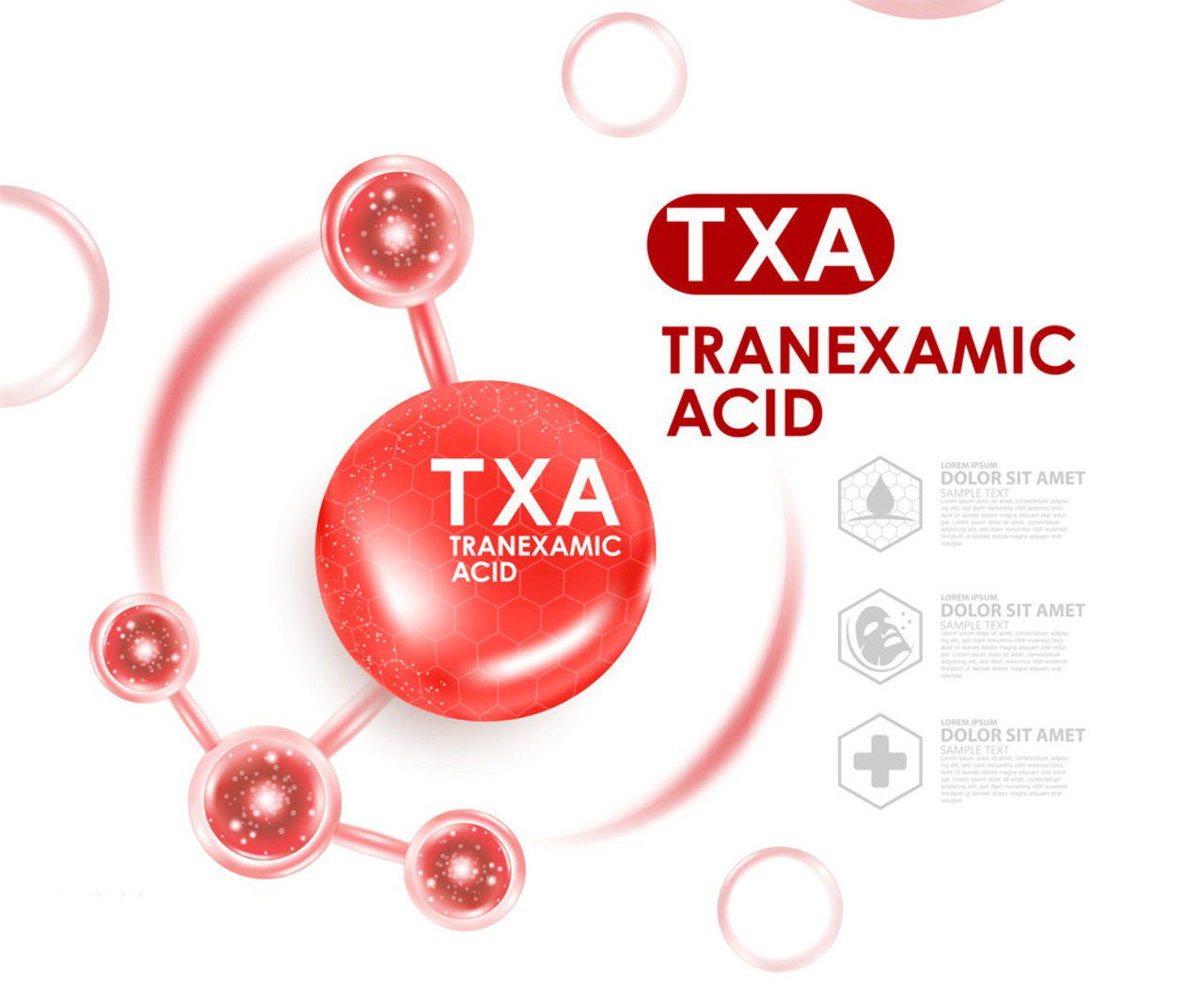Tranexamic acid is a medication that has various medical applications, primarily due to its ability to reduce bleeding and promote clotting. It works by inhibiting the breakdown of blood clots and preventing excessive bleeding.
Applications of Tranexamic Acid
Bleeding Disorders: Tranexamic acid is used to treat or prevent excessive bleeding in individuals with bleeding disorders such as hemophilia and von Willebrand disease.
Surgery: It is commonly used in surgery, particularly in orthopedic and cardiac procedures, to reduce perioperative bleeding. It can be given intravenously (IV) or orally before and after surgery.
Trauma: Tranexamic acid is used in trauma situations, such as car accidents or injuries, to control severe bleeding. It is often administered as part of a trauma protocol in emergency medical settings.
Menstrual Bleeding: Tranexamic acid can be prescribed to women who experience heavy menstrual bleeding (menorrhagia) to reduce the duration and intensity of menstrual bleeding.

Nosebleeds (Epistaxis): It can be used to treat recurrent or severe nosebleeds by promoting clotting in the blood vessels of the nose.
Dental Procedures: Tranexamic acid mouthwash is sometimes used to control bleeding during dental surgeries or dental extractions.
Postpartum Hemorrhage: It may be used to treat or prevent excessive bleeding after childbirth (postpartum hemorrhage).
Hereditary Angioedema: Tranexamic acid can help reduce the severity and duration of swelling attacks in individuals with hereditary angioedema, a rare genetic disorder.
Melasma: In dermatology, topical tranexamic acid is sometimes used to treat melasma, a skin condition that causes dark patches on the face.
Other Medical Conditions: Tranexamic acid is also being investigated for use in other medical conditions, such as uterine fibroids, nosebleeds associated with certain medical conditions, and even in eye surgeries to reduce bleeding during and after the procedures.
It’s important to note that tranexamic acid should be used under the guidance and prescription of a medical professional, as its dosage and administration can vary depending on the specific condition being treated. Additionally, it may have contraindications or interactions with other medications, so a healthcare provider’s guidance is crucial.
Adverse Effects of Tranexamic Acid
Tranexamic acid is a medication used to treat or prevent excessive bleeding. It works by helping to prevent blood clots from breaking down too quickly. While it can be effective in various medical situations, it’s important to be aware of potential adverse effects and side effects associated with its use. Common adverse effects of tranexamic acid may include:
Gastrointestinal Distress: Nausea, vomiting, diarrhea, and stomach cramps can occur in some individuals. Taking the medication with food can help alleviate these symptoms.
Headache: Tranexamic acid can cause headaches in some people.
Skin Rash: Skin reactions, such as a rash or itching, can occur as an adverse effect.
Muscle and Joint Pain: Some individuals may experience muscle and joint pain while taking this medication.
Visual Disturbances: Although rare, some individuals may experience visual disturbances, such as color vision changes or blurred vision. It’s crucial to discontinue the medication and seek medical attention if these symptoms occur.
Allergic Reactions: While rare, severe allergic reactions to tranexamic acid can occur. Symptoms may include difficulty breathing, swelling of the face, lips, tongue, or throat, and hives. Seek immediate medical attention if you experience any signs of an allergic reaction.

Blood Clots: Tranexamic acid is designed to prevent the breakdown of blood clots, but in some cases, it can increase the risk of developing abnormal blood clots. This risk is higher in people who have a history of blood clotting disorders.
Seizures: Although uncommon, there have been reports of seizures in individuals taking tranexamic acid, especially at higher doses or in individuals with a history of seizures.
Nausea and Vomiting: These symptoms are relatively common side effects of tranexamic acid, particularly when taken without food.
It’s important to use tranexamic acid under the guidance of a healthcare professional who can evaluate the potential benefits and risks based on your specific medical condition. You should inform your healthcare provider of any preexisting medical conditions, allergies, or medications you are taking to minimize the risk of adverse effects and interactions. If you experience severe side effects or adverse reactions, seek immediate medical attention.
